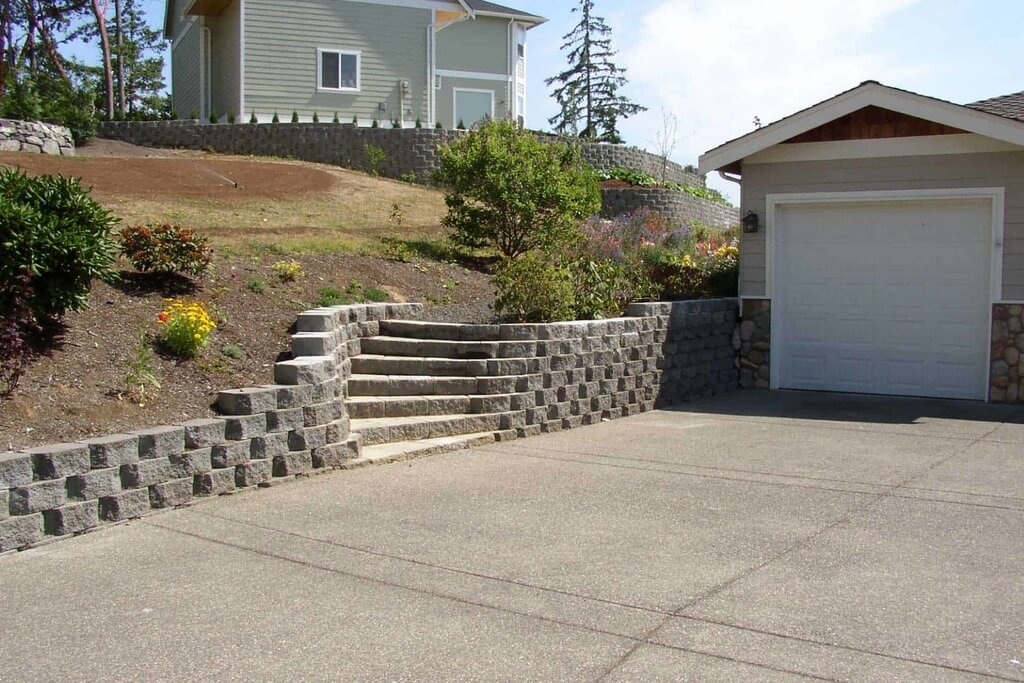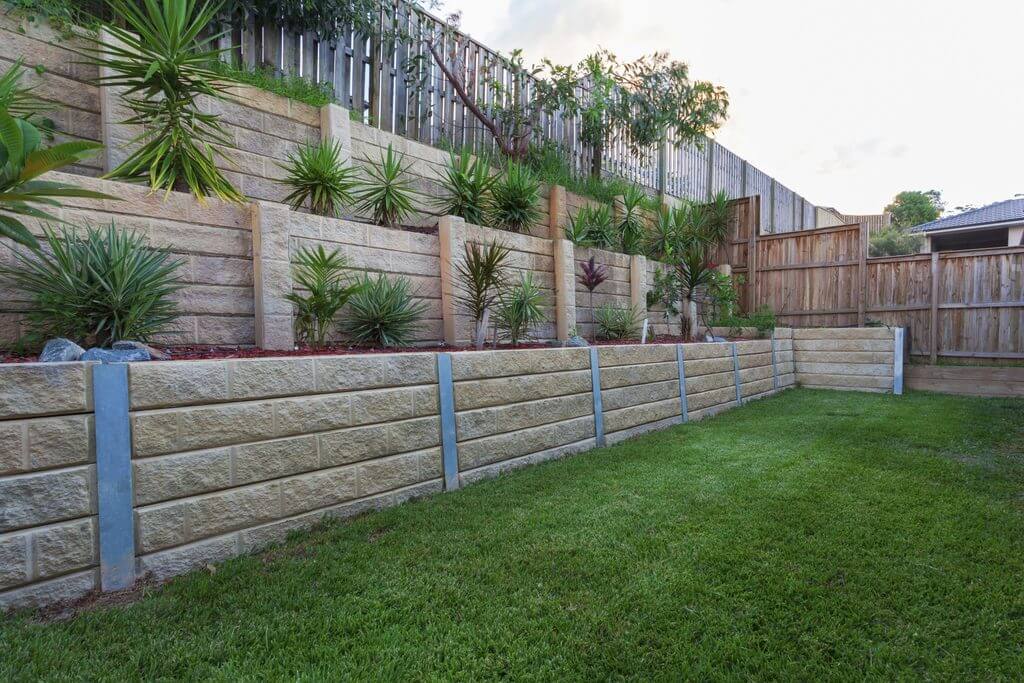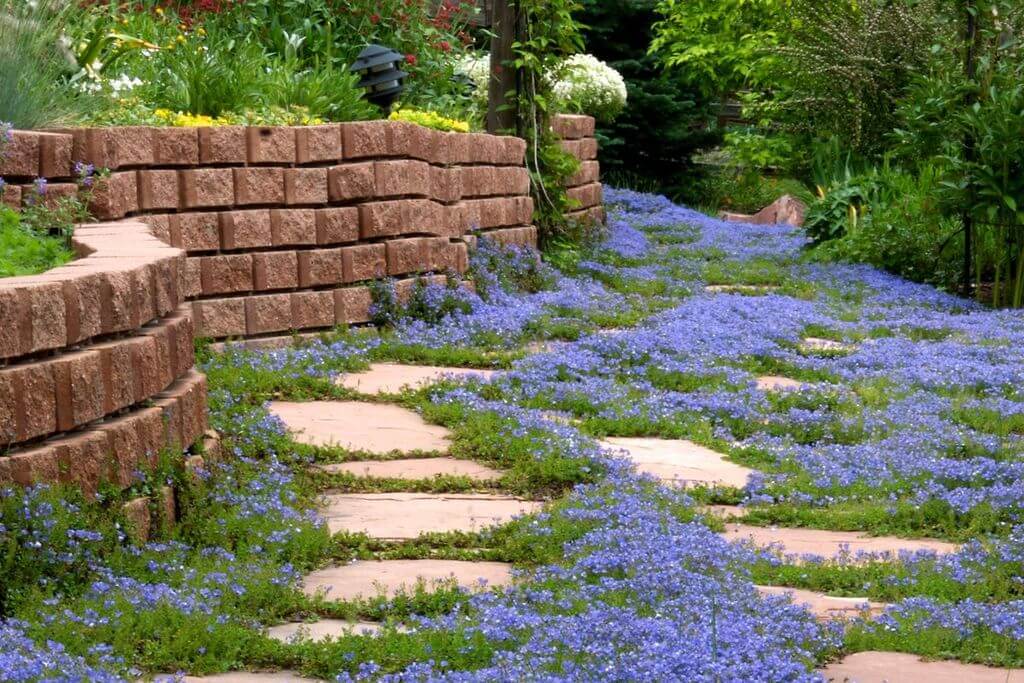If you are a residential or commercial property owner that is currently looking for worthy investments for your property, you may have already heard about retaining walls countless times. Contrary to popular belief, retaining walls are more than just a structure. Instead, it is a wall that can offer various benefits to its owners, such as increasing property value, protection against flooding, erosion, and more.
Due to the advantages that come with having a MagnumStone interlocking concrete block retaining wall, more people are curious about how they work. Are there any height limitations to these walls? Are they only capable of holding back a specific amount of weight? How much would the installation possibly cost?
Everything You Need to Know About Retaining Walls

In order for you to see whether retaining walls are for you, here is an overview of the details you will need to know before contacting a contractor company. After all, you would not want to spend time and money only to regret your decision in the long run.
How Much Weight Can Retain Walls Support?
Generally, it is important to know that a retaining wall can hold the weight you need it to as long as it is designed and installed properly. Each type of wall, whether gravity walls or anchor walls have its height and weight limitations. These are what make them last longer and what makes them safe to use. When there are limits in place, it is easier to determine which one will work best for your demands.
There are many types of retaining walls. Depending on the material you use and the support you need, some will suit your needs better than others.
The Basic Types of Retaining Walls

The most popular types of walls we see in our cities are the following:
First, the Gravity Retaining Walls
In the construction industry, we consider gravity walls as the most popular and basic type of retaining wall. Why? Because they are the easiest and most cost-effective type to build.
It is possible to use most masonry materials in building a gravity wall. They are commonly used for segmentation, landscaping, gardening, and aesthetic appeal.
Appearance: Gravity walls are the type that has the simplest appearance. Most of the time, it appears just like how the standard wall is supposed to look.
Limitations: This retaining wall only relies on its own weight for support. Hence, it is wise to use them for structures that are around 3 meters or less. Gravity walls can only support lower mass compared to other wall types. Due to the reason that they do not have additional support, they are often used for low-risk areas.
Second, the Cantilever Retaining Walls
We consider cantilevered walls to be stronger than gravity walls. Although there are many factors that influence the durability of a wall, the structure of cantilevers makes them better for supporting heavier soil.
When designing a cantilever, it is possible to use a variety of materials, including steel or concrete. If strength is the top priority, using steel posts can provide the necessary support and stability for your cantilever. Steel is a strong and durable material that can withstand heavy loads and can be designed to complement the overall aesthetic of your structure.
Additionally, using steel posts in the construction of your cantilever can ensure that it remains stable and secure, even in areas with high levels of wind or other environmental factors. If you’re looking for a practical and long-lasting solution for your cantilever design, consider using steel posts to provide the necessary support and stability
Appearance: Compared to other retaining walls, cantilevers usually have two parts: a stem and a base slab. They can be T-shaped or L-shaped.
Limitations: This retaining wall can reach up to 6 meters in height. Due to the difference in height and support capabilities, they can effectively carry more weight than gravity walls.
Third, the Piling Retaining Walls
Pile retaining walls are flexible and can be used in both temporary and permanent projects. Hence, they are often seen on construction sites.
Sheet piling is one of the most popularly known materials for this wall type.
Appearance: Just like their name, piling walls appear to “pile” on top or next to each other. They are often thin which makes them a hit for areas with smaller space.
Limitations: This retaining wall can also reach up to 6 meters in height. Because of the possibility of using reinforced material, it is possible for the wall to carry heavy tons of soil. Although the weight capacity will depend on its thickness and material, they are perfect for providing lateral support for sloped areas.
Fourth, the Anchored Retaining Walls
Anchored retaining walls are often one of the strongest types of walls all over the world. Due to its additional support, they are often reliable in big-scale projects.
It is possible to use various types of masonry and construction material for this wall, but if functionality is the priority, reinforced concrete is the way to go.
Appearance: Although the anchors or tiebacks of the wall are not usually visible, this is what makes the wall different from the others.
Limitations: Some materials will work better for anchored retaining walls. This retaining wall can reach 7 meters and more. Anchoring walls are perfect for areas with loose rocks and soil, as the cables can be buried underground to support the area better.
An Important Note When It Comes to Weight Capacities:

More often than not, it can be difficult to deduce just how much weight can a retaining wall hold without knowing the following:
The Materials to Use
The material used for the design of the wall is one of the most important things to consider in determining the weight capacity of the wall. For example, the standard type of concrete is weaker than reinforced concrete. Hence, if we compare two 4-meter walls using these materials, the one using reinforced concrete can carry heavier soil.
The Type of Wall Required
Depending on the location, weather, and soil type of the area, it will also need a specific type of wall in the first place. As a result, these factors may determine the capacity of the wall to be installed.
The Type of Wall Required
As mentioned above, some types are more suitable depending on your needs. Because of this, the best way to determine the type of wall you need is to get the assistance of a professional installer.
Is There the Best Type of Retaining Wall?
The best type of retaining wall is the one that will work best for what you need. For example, even if anchored walls are stronger than a gravity wall, the latter will be best for you if you will only need it for gardening purposes.
How Much Does It Cost to Install a Retaining Wall?
There are many factors that will affect how much you will have to pay for your retaining wall. Aside from labor costs for the professional installers, the material you choose will heavily affect the overall costs of the process.
Cost of Materials Per Square Foot:
Cinder block walls are perfect for gardening and segmentation purposes. They can cost around $10 per square foot.
Concrete walls are best for almost all types of retaining walls due to their durability and support capabilities. They cost around $18 per square foot.
Timber walls are great for temporary purposes. If they are common in your area, you can get them for $10 per square foot.
Conclusion
Stone walls are wonderful for people whose main priority is aesthetics. They can be used for gardening, segmentation, short barriers, and more. Unfortunately, they can be difficult to install. For every square foot, expect to pay around $23 or more.
Discover more:

